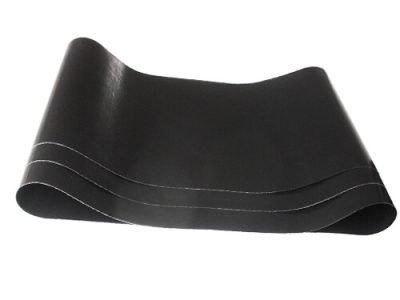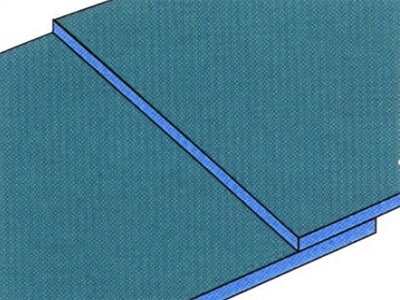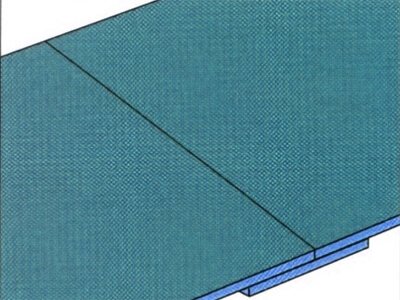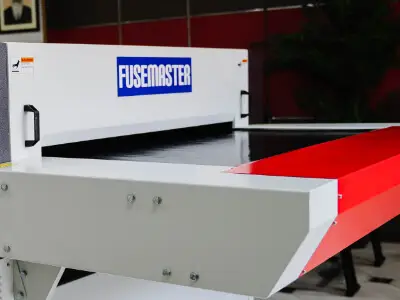PTFE Fusing Belts
HOME / PRODUCTS / PTFE Or Silicone Coated Belts / PTFE Coated Fiberglass Fabric Belts / PTFE Fusing Belts


PTFE Fiberglass Belt Specialized for Fusing Machines
The fusing machine belt is a specialized PTFE fiberglass belt designed for fusing machines. This belt features a non-stick surface, providing exceptional quick release properties. With a high temperature resistance of up to 260°C (500℉), it ensures optimal performance in heat-intensive processes and boasts a prolonged lifespan.
PTFE seamless and seamed fusing machine belts are meticulously crafted to deliver the mechanical strength required in fusing and laminating industries. Tailored for fusing machines like Oshima, Kannegiesser, Meyer, Macpi, and numerous others, our PTFE fusing machine belts are designed to meet the stringent demands of these applications.
Seamless Fusing Belts, characterized by the absence of any joints, are crafted from woven fiberglass or Kevlar coated with PTFE resin. These belts feature a smooth surface, offer an excellent antistatic effect in the black version, and boast a long lifespan. They address the shortcomings associated with traditional fusing belts that have joints.
In instances where certain belt sizes cannot be produced as traditional seamless fusing belts, Saryee Belting adopts a laminating approach. These belts remain seamless by incorporating one layer of anti-static PTFE fabric on the inside and another layer of tear-resistant PTFE fabric on the outside. The two layers are staggered and welded together, creating an untouchable connection. This laminating process significantly enhances tensile strength, abrasion resistance, and the overall lifespan of the belts.
Seam Fusing Belts, also referred to as fusing belts with joints, are widely used in the industry owing to their cost-effectiveness. Three joint methods are available as follows:


1. Overlap Splice - Suitable for applications where an even surface is not critical, the overlap joint involves cutting ends straight or diagonally, overlapping the two ends, and heat-sealing. While durable, this joint has double thickness.


2. Butt Splice - This method involves butting two ends together and reinforcing them with a strap underneath for added strength. Scifluo's thinnest reinforcing strap, with a thickness of 0.04mm, ensures minimal step on the joint part.


3. Scarfed Splice - The scarf joint involves grinding to taper the two ends, minimizing thickness at the splice area, and then overlapping and heat-sealing. This type is more suitable for thicker belts.
Laminated Fusing Belts, also known as two-ply or double-layer fusing belts, incorporate static-resistant varnished cloth on the inside and tear-resistant fiberglass cloth on the outside. The two-ply design enhances the belt’s strength, prolongs its lifespan, maintains a well-balanced thickness, exhibits excellent deflecting prevention capacity, and ensures a smooth surface. This configuration is particularly beneficial for fusing super-thin fabrics.
Antistatic PTFE Fusing Machine Belts are made from PTFE coated fabrics that have been carbon loaded. This modification enhances certain properties of the PTFE material, making it more conductive and improving its antistatic characteristics.
Key Features:
- Temperature Resilience: Capable of withstanding high temperatures within the range of -70 to 260℃ (-158 to 500℉), ensuring reliable performance in various industrial applications.
- Mark-Free Lamination: Leaves no marks on laminated garments, contributing to a flawless and high-quality finish in the manufacturing process.
- Anti-Static Capability: Provides an anti-static effect if required, minimizing static-related issues and ensuring a safe working environment.
- Smooth and Non-Stick Surface: Features a smooth and non-stick surface, facilitating seamless processes and preventing materials from adhering to the belt surface.
- High Tensile Strength and Dimensional Stability: Exhibits high tensile strength and dimensional stability, ensuring durability and consistent performance even under challenging conditions.
- Extended Lifespan: Boasts a longer lifespan compared to Teflon belts with joints, providing a cost-effective and reliable solution for industrial operations.
- Chemical and Solvent Resistance: Resistant to chemicals and solvents, maintaining integrity and performance in the presence of various substances.
- Non-Toxic and Food-Grade: Meets non-toxic and food-grade standards, making it suitable for use in the food industry and ensuring compliance with safety regulations.
Key Applications:
Fusing machine belts are compatible with a diverse range of fusing machine brands, including Oshima, Hashima, Viet, Meyer, Macpi, Fiblon, and Kannegiesser machines.
Specification:
| Common sizes of Fusing Machine Belt | |||
| Fusing Machine | Machine Model | Belt Size | Belt Thickness |
| OSHIMA | 450F(GS) | 460mm x 1540mm/1830mm | 0.38mm |
| 600F | 625mm x 1400mm/2000mm | 0.38mm | |
| 90LD(900) | 910mm x 2450mm/2450mm | 0.42mm | |
| 100LD(1000) | 1010mm x 2450mm/2450mm | 0.42mm | |
| OSHIMA | 1400 | 1400mm x 3920mm/4500mm | 0.45mm |
| 1600 | 1600mm x 3920mm/4500mm | 0.50mm | |
| 1600L | 1600mm x 3920mm/5270mm | 0.50mm | |
| HASHIMA | HP-220K | 220mm x 1550mm/1830mm | 0.38mm |
| HP-450K | 450mm x 1550mm/1830mm | 0.38mm | |
| HP-450J | 450mm x 1360mm/1660mm | 0.38mm | |
| HP-60LN | 600mm x 2450mm/3890mm | 0.38mm | |
| MACPI | 600mm x 2840mm/4708mm | 0.38mm | |
| 700mm x 3890mm/4700mm | 0.38mm | ||
| 1000mm x 3090mm/4500mm | 0.42mm | ||
| 1000mm x 3890mm/6000mm | 0.42mm | ||
| MACPI | 1400mm x 3090mm/4500mm | 0.45mm | |
| 1400mm x 3890mm/6000mm | 0.45mm | ||
| 1440mm x 2790mm/4760mm | 0.50mm | ||
| 1600mm x 4880mm/4880mm | 0.50mm | ||
| Kannegiesser | 600mm x 1940mm/2300mm | 0.38mm | |
| 620mm x 1940mm/2320mm | 0.38mm | ||
| 620mm x 2840mm/4340mm | 0.38mm | ||
| 1050mm x 3890mm/4340mm | 0.42mm | ||
| 1240mm x 3890mm/6700mm | 0.42mm | ||
| Kannegiesser | 1640mm x 3890mm/4340mm | 0.50mm | |
| 1640mm x 5450mm/6700mm | 0.50mm | ||
| 1640mm x 4720mm/5100mm | 0.50mm | ||
| 1880mm x 3890mm/6000mm | 0.50mm | ||
| 1880mm x 6700mm/9200mm | 0.50mm | ||


